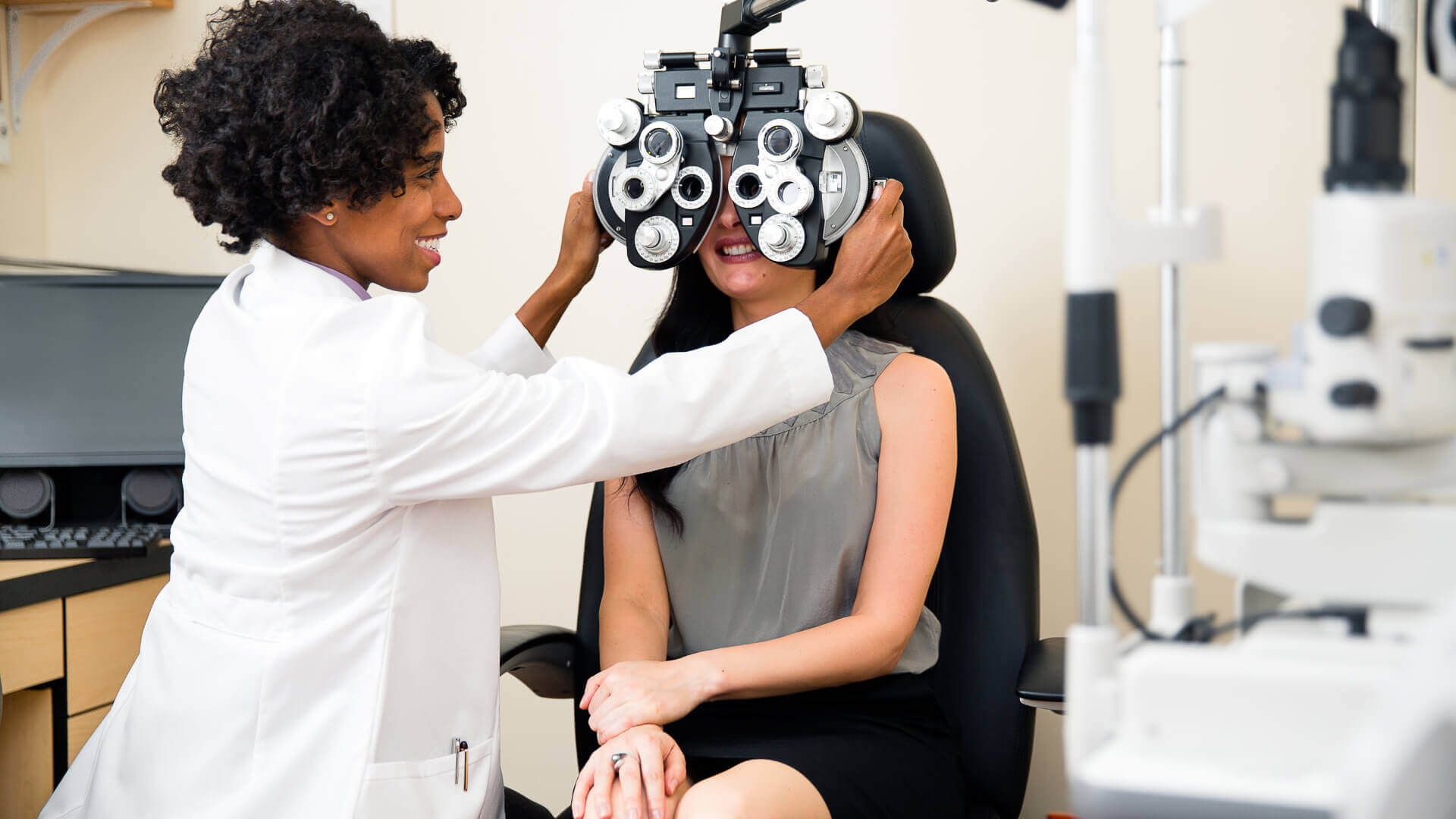
ESA patient Gloria had a terrible headache, and a week later started experiencing double vision. She had an appointment already scheduled with her primary care provider, so she decided to wait a week and ask about it during her appointment. Her provider was immediately concerned and sent her to the hospital for testing. The CT scan and MRI didn’t show anything, but the double vision and overwhelming blurring was driving her crazy. She could only see correctly by keeping one eye shut. She made an appointment with her regular eye doctor, Dr. Wymore, at Eye Surgeons Associates.
Dr. Wymore performed a full eye exam. A cranial nerve III palsy was found. Dr. Wymore explains, “This nerve supplies several of the muscles responsible for moving the eye in different directions. The misalignment of the muscles due to the palsy was the cause of her double vision. While there are multiple causes for ocular muscle palsies, a worrisome one in this case was an intracranial aneurysm. Rupture of this aneurysm can have severe consequences.”
Dr. Wymore ordered an angiogram to determine the diagnosis. Gloria states, “Dr. Wymore very calmly called the hospital and ordered a CT angiogram, telling me to go now.” An intracranial aneurysm was discovered on the CT angiogram, and she was sent immediately by ambulance to the neurosurgery specialists at the University of Iowa Hospitals and Clinics. Gloria recaps, “Wednesday, I saw my primary care provider, Thursday, I saw Dr. Wymore and Friday the doctor in Iowa City placed a stent. Sunday I was home. It was fast and scary, but everyone was nice and helpful.”
Gloria continues, “I’m a lot better, but still have a little double vision. I’m seeing Dr. Frederick now at ESA to help with muscle alignment.” Dr. Frederick specializes in eye muscle alignment. In this situation, simple healing over time may help. Prisms in glasses or surgery on the muscles are options depending on the severity of the residual misalignment.
Dr. Wymore adds, “There are a variety of medical issues which may have accompanying eye signs or symptoms. Eye doctors are occasionally the first to discover high blood pressure, diabetes, stroke risk, and other more unusual problems.”
Double vision, or diplopia, can arise from a host of diseases ranging from less threatening to life-threatening. Typically, monocular diplopia, when there is double vision when only opening one eye, generally arises from benign conditions limited to the eye itself, such as refractive errors, cataracts, retinal disease, or even ocular surface issues such as dry eye. Binocular diplopia, when double vision occurs only with both eyes open and disappears when one eye is covered, arises from eye misalignment. This can result from less threatening causes, as well, however, binocular diplopia can also result from a more concerning range of causes, including neurogenic causes like cranial nerve palsies or myasthenia gravis, and thyroid eye diseases or tumors.
Gloria concludes, “My one piece of advice is if you experience double vision, go see your eye doctor! Dr. Wymore is always great, but this time he was amazing. He set the ball in motion and saved my life.”
BIO: Dr. Wymore, with Eye Surgeons Associates, is a board-certified general ophthalmologist. He practices at our office in Rock Island.
The material contained in this article is for informational purposes only and is not intended to be a substitute for professional medical advice, diagnosis, or treatment. Always seek the advice of your physician or other qualified health care provider.
